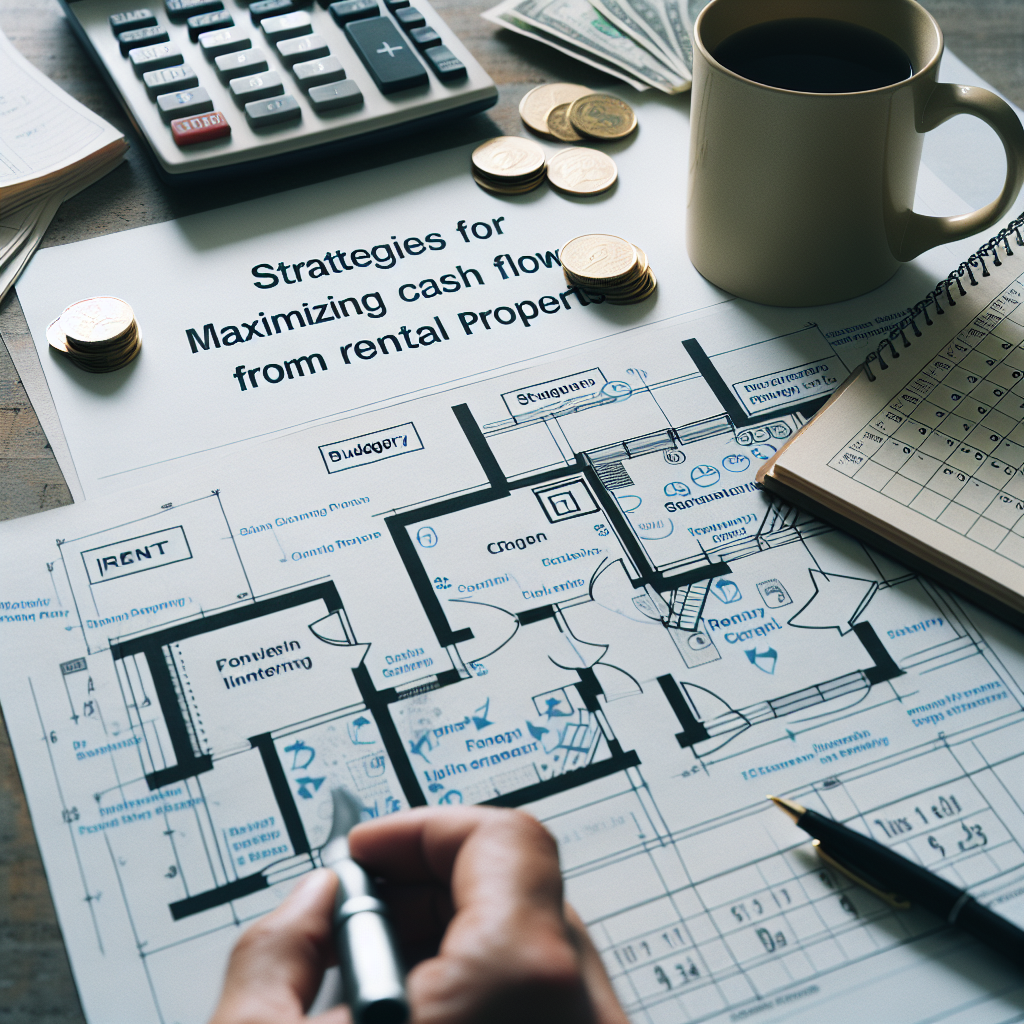Understanding Your Rental Market
Researching Local Trends
When I first got into rental properties, I quickly realized that knowing your market is key. It’s not just about buying and renting; it’s about knowing what’s going on around you. I started by checking out local real estate websites and talking to other landlords to gather intel. Understanding average rent prices, peak seasons for rentals, and the types of properties that are in demand can help you position your property effectively.
I also found that local events, employment rates, and even schools could affect rental prices. For instance, if a new company is moving to town, the demand for housing could skyrocket! Keeping an eye on these trends allows me to adjust my rental strategy and potentially charge more.
If you’re not doing your homework, you risk overpricing or underpricing your property, which can seriously affect your cash flow. So make sure to dive deep into the data specific to your area.
Competitive Analysis
Okay, so once you’ve done your research, it’s time to take a good look at your competition. I can’t stress this enough: you need to know who else is renting in your area and what they offer. Check out what similar properties are charging for rent and how they’re marketed. I like to create a little chart that compares my property’s features with others nearby, as it helps me highlight the selling points of my own property.
Don’t just look at their prices—look at their amenities, the condition of their properties, and their tenant reviews. This helps you figure out where you stand. If your competition has a pool and you don’t, you might want to consider adding something extra to your rental, like a well-furnished patio.
Moreover, understanding how your competitors interact with tenants can show you how to improve your own service. Good tenant relationships can lead to higher retention rates and lower vacancy rates, which is priceless.
Targeting the Right Tenants
Once you’ve got your market and competitors down, it’s time to think about who you want in your properties. From my experience, targeting the right tenants can be a game changer. Are you going for families, working professionals, or students? Knowing your target demographic helps tailor your property to their needs.
For example, if you’re renting to families, consider adding features that appeal to them like a playground nearby or extra storage space. If you’re looking at professionals, then maybe focus on amenities that accommodate their busy lifestyle, like quick access to public transportation or smart home features.
Your marketing strategy should reflect who you want to attract. Creating relatable content in your ads can help draw in your ideal tenants. Trust me, when you know your audience, it’s much easier to keep them happy and satisfied in your property.
Optimizing Property Management
Maintenance and Upkeep
Let’s face it—maintenance can be a total pain sometimes. But in my experience, I’ve learned that keeping your property in great shape pays off big time. Regular maintenance is not just about fixing things when they break; it’s about being proactive. I’ve set up a routine where I inspect my properties at least twice a year. This helps to avoid any potentially costly repairs down the line.
Also, don’t shy away from upgrading your properties. For instance, newer appliances can be a great selling point, and they’re often more energy-efficient, which is something tenants love. Keeping the units fresh says a lot about you as a landlord and makes tenants more likely to stick around.
Plus, all those little annoyances like squeaky doors or burnt-out light bulbs? Address them quickly. When tenants see that you’re responsive to the property’s needs, they feel valued, which translates into a smoother landlord-tenant relationship.
Utilizing Technology
Technology can be a lifesaver in managing rental properties. I’ve invested in property management software that helps streamline everything—rent collection, maintenance requests, tenant communications, you name it! This not only makes my life easier but enhances my tenants’ experience.
Nowadays, online portals let tenants pay their rent from the comfort of their couch (yes, please!). This reduces the chances of late payments and improves cash flow. Plus, it gives me a record of transactions, which is handy come tax time.
And let’s not forget about smart home technology! Things like smart locks, thermostats, and security systems can add value to your rental while making it more attractive. More features often lead to better tenants and an improved cash flow situation.
Effective Communication
Let’s talk about the glue that holds everything together—communication. From my experience, establishing clear lines of communication with your tenants is essential. It’s about creating trust from the get-go. When you’re upfront about policies, fees, and expectations, it sets the tone for a more harmonious rental relationship.
Regular check-ins with tenants, whether in person or through a quick message, ensure they feel heard and that they’re comfortable raising any issues. This not only keeps the relationship friendly but could also lead to them staying longer, thus providing you a steady cash flow.

https://Credit411USA.com
In addition, using digital tools to facilitate communication can save time. Whether through texting or using property management apps, fast responses to maintenance requests or tenant queries can go a long way in creating great landlord-tenant relationships.
Setting the Right Rental Price
Conducting a Comparative Market Analysis
So, now we’re onto what can make or break your cash flow: setting the right rental price. I’ve learned that overpricing can leave your property sitting vacant, while underpricing can cause you to miss out on cash flow. Conducting a solid comparative market analysis (CMA) is vital. I like to create a list of similar properties, taking note of their rental prices, features, and how long they were on the market.
A good CMA will help you find that sweet spot where demand meets your desired profit. And don’t forget to factor in seasonality! For instance, demand might be higher in the summer months when families are moving. This is something I always consider when listing my properties.
Price can also be influenced by the condition and features of your property. If you’ve put in work to update your space, don’t be shy about charging a little more. Show potential tenants what they get for their money!
Trial and Adjustment
One of the great lessons I’ve learned is that your initial pricing isn’t set in stone. If your property isn’t renting well, don’t hesitate to adjust. I once had to drop the rent slightly on a property after sitting vacant for a few months. It worked like a charm; I got a great tenant who stayed for years. Just make sure not to drop your prices too quickly, as it might devalue your property in the eyes of potential tenants.
Keep an eye on your property’s performance after you adjust the price. If it starts attracting interest, that’s a good sign you found a better price point. Be prepared to reevaluate as market conditions change, too!
Ultimately, staying flexible and observant can make a big difference in your cash flow success. Don’t be afraid to trust your gut and tweak as necessary.
Incentives for Long-term Tenancy
Finally, let’s chat about incentives. Sometimes, the best way to ensure steady cash flow is to keep great tenants around. Offering incentives can help with that. Whether it’s a small discount on the first month’s rent, free maintenance for a year, or even a loyalty bonus for long-term tenants, these perks can encourage tenants to stick around longer.
Also, consider how you structure your leases. Offering longer leases might mean less frequent turnover, which can save you money in marketing and preparing the unit for new tenants. Plus, it gives you stability in cash flow—who doesn’t want that?
After all, happy tenants are often the ones who renew their leases and practice a little “word of mouth” marketing for your property. It’s a win-win all around!
Conclusion
Maximizing cash flow from rental properties can feel like a juggling act, but it’s all about understanding the market, managing effectively, setting the right price, and keeping those communication lines open. When you focus on these areas, you’ll find that not only does your cash flow improve, but so does the experience for both you and your tenants. So take these strategies to heart and watch your rental business thrive!
FAQ
What is the most crucial factor in maximizing cash flow from rental properties?
Understanding your rental market is key. Knowing the local trends and what tenants are looking for can set the foundation for all your decisions moving forward.
How can I attract the right tenants for my property?
By identifying your target demographic and tailoring your property and marketing strategy to meet their needs. Ensure your property offers features that will appeal specifically to that group.
What should I do if my property isn’t renting at the price I set?
Consider conducting a comparative market analysis to see if you need to adjust your price. You might also want to examine your property’s features and condition to ensure they match the price point.
Is technology really necessary in property management?
Absolutely! Technology simplifies many aspects of property management—from collecting rent to maintenance requests—and can greatly enhance tenant satisfaction.
What kind of incentives work best for keeping tenants long-term?
Incentives like discounts on rent or bonuses for renewed leases can be effective. The goal is to provide something of value that encourages tenants to see your property as their long-term home.

https://Credit411USA.com

